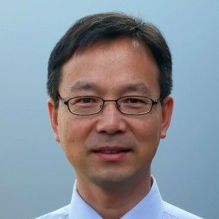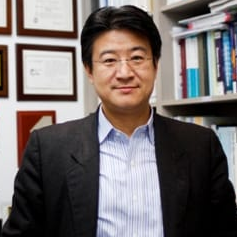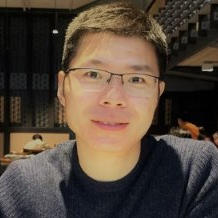Nanostructured Membranes II
A special issue of Membranes (ISSN 2077-0375). This special issue belongs to the section "Inorganic Membranes".
Deadline for manuscript submissions: closed (31 August 2021) | Viewed by 30868
Special Issue Editors
Interests: nanostructured membranes; porous materials; membrane characterization
Special Issues, Collections and Topics in MDPI journals
Interests: inorganic membrane fabrication; membrane filtration mechanism; membrane module design; multiscale simulation
Special Issues, Collections and Topics in MDPI journals
Interests: process intensification and integration for designing energy-efficient hybrid membrane systems; transport modeling and process simulation in the areas of resource recovery; bioseparation and chemical sensing
Special Issues, Collections and Topics in MDPI journals
Interests: membrane separation; desalination, water treatment; gas separation; carbon capture and utilisation; resource recovery
Special Issues, Collections and Topics in MDPI journals
Special Issue Information
Dear Colleagues,
This Special Issue came as the natural consequence of the great success of the previous Special Issue "Nanostructured Membranes".
The world’s growing population and demographic change demand the supply of an unprecedented volume of clean water to society. The increase in agricultural activities and industrialisation also generates a large amount of waste that will have significant implications for sustainable development. This has led to the development of innovative materials to be used in various separation industries.
The unique nanostructure and enhanced surface properties of nano-materials provide new perspectives on separation membranes. The surface energy, porosity, crystalline structure, and morphology at the nano-scale were shown to have a direct impact on the material’s plasmonic, magnetic, catalytic, thermodynamic, and filtering properties, opening a route to the design of exciting new membrane separation systems. The application of nanostructured materials in separation science, which is concerned with how to selectively reclaim solvents or remove contaminants from mainstreams, still, however, faces a number of challenges, largely related to particle agglomeration, high energy consumption, organic, inorganic, and biological fouling, mechanical and chemical stability of the nano-materials’ surface properties, and evident reproducibility due to the diverse range of existing synthesis techniques.
The performance of nanostructured membranes can be further augmented by the functionalisation of materials, either by introducing materials or modifying the surface with a novel functionality. Significant breakthroughs have particularly been made in combinatorial materials design, which aims to develop multi-functional hybrid systems.
The purpose of this Special Issue is to publish high-quality research papers as well as review articles addressing recent developments in the application of nanostructured membrane materials. We seek original, high-quality contributions that are yet to be published or that are not currently under review by other journals or peer-reviewed conferences.
Potential topics include, but are not limited to:
- new nanoscale porous architectures;
- strategies for the synthesis of novel materials for nanostructures
- our understanding of fundamental interfacial interactions between nanomaterials and contaminants;
- industrial exploration of nanostructured membranes;
- modelling of fouling and scaling at the nanoscale;
- novel strategies for incorporating catalytic materials into chemical reactors;
- advanced catalytic coatings and surfaces;
- photo-catalysis applied to liquid and gas remediation;
- passivation and regeneration of nanocatalysts;
- design of super-adsorbents;
- super-adsorbents for solvent reclamation;
- nanotextured or porous membrane materials;
- flow enhancement across nanoporous membranes;
- advanced technology for the characterisation of nanostructured membranes;
- computational simulation of membrane processes; and
- molecular dynamics simulation of flow and interfacial interaction.
Prof. Dr. Lingxue Kong
Prof. Dr. Kuo-Lun Tung
Prof. Dr. Xing Yang
Dr. Shuaifei Zhao
Guest Editors
Manuscript Submission Information
Manuscripts should be submitted online at www.mdpi.com by registering and logging in to this website. Once you are registered, click here to go to the submission form. Manuscripts can be submitted until the deadline. All submissions that pass pre-check are peer-reviewed. Accepted papers will be published continuously in the journal (as soon as accepted) and will be listed together on the special issue website. Research articles, review articles as well as short communications are invited. For planned papers, a title and short abstract (about 100 words) can be sent to the Editorial Office for announcement on this website.
Submitted manuscripts should not have been published previously, nor be under consideration for publication elsewhere (except conference proceedings papers). All manuscripts are thoroughly refereed through a single-blind peer-review process. A guide for authors and other relevant information for submission of manuscripts is available on the Instructions for Authors page. Membranes is an international peer-reviewed open access monthly journal published by MDPI.
Please visit the Instructions for Authors page before submitting a manuscript. The Article Processing Charge (APC) for publication in this open access journal is 2700 CHF (Swiss Francs). Submitted papers should be well formatted and use good English. Authors may use MDPI's English editing service prior to publication or during author revisions.
Keywords
- nanostructure
- surface interfacial interaction
- super-adsorbents
- modelling
- functionalisation.









